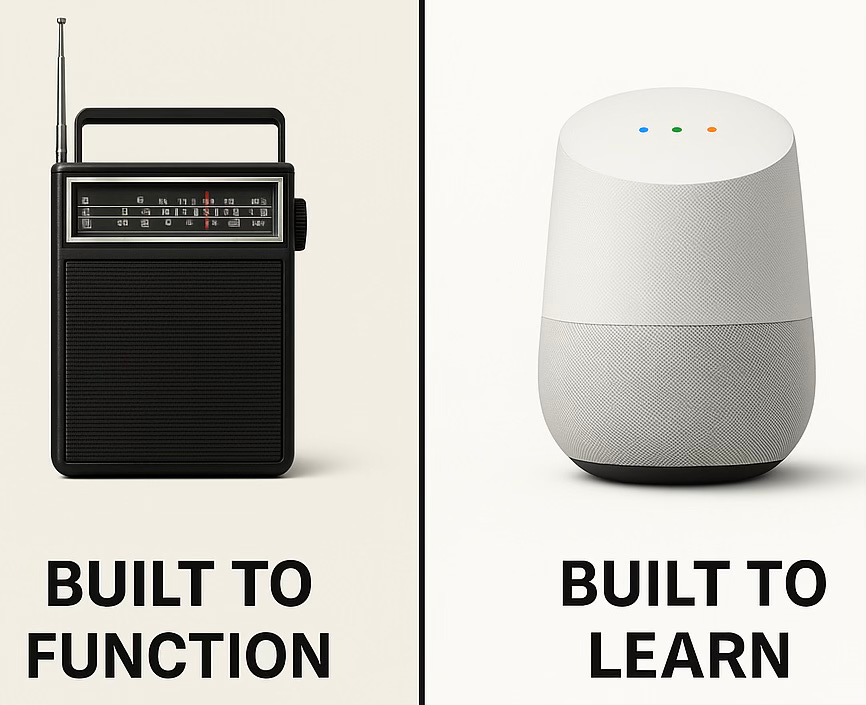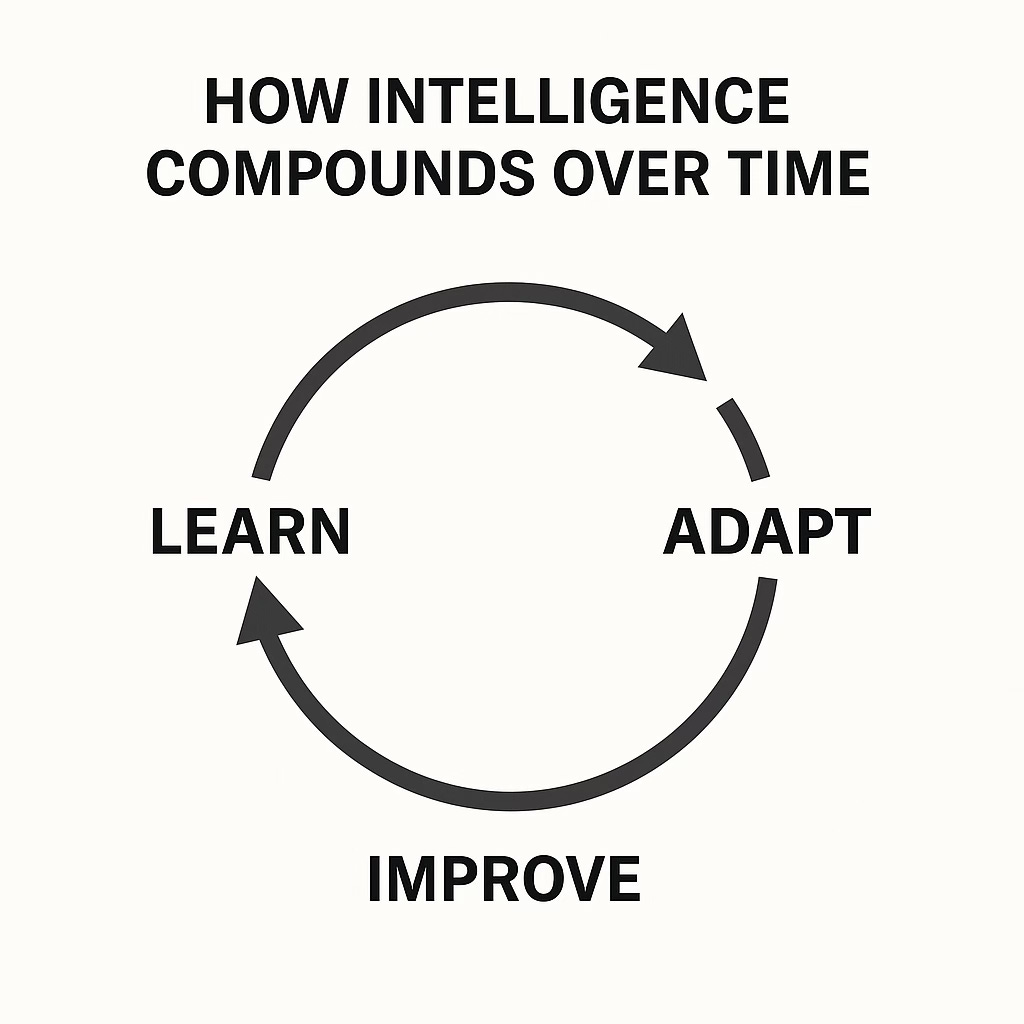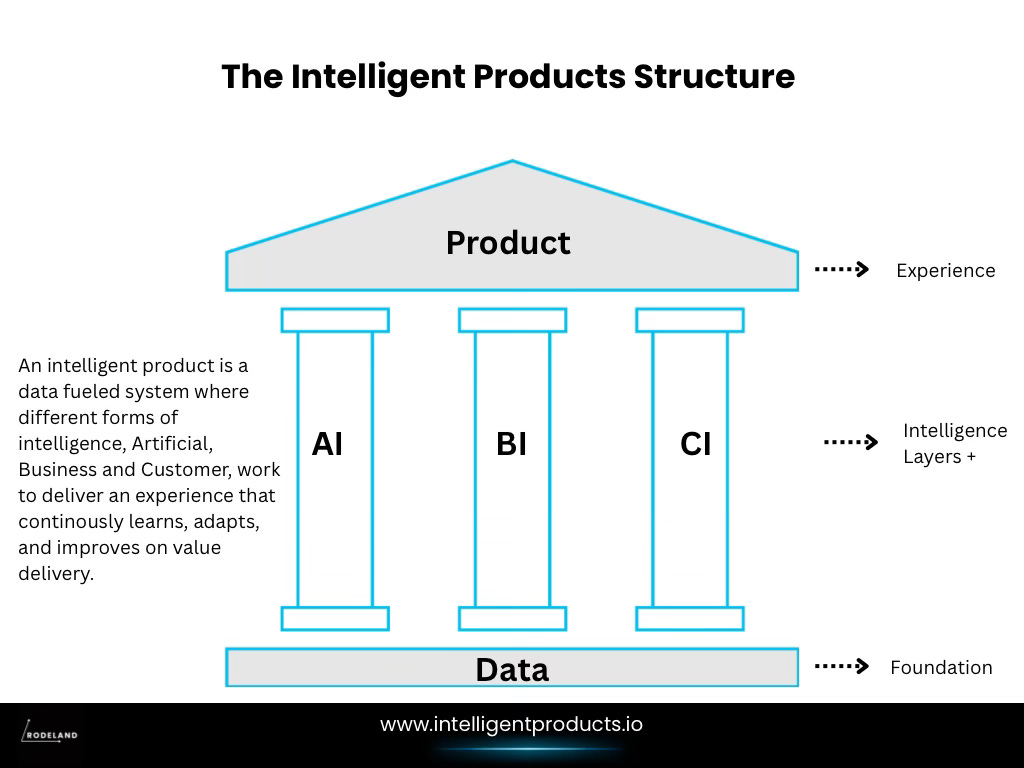⚪️10 Key Principles of Intelligent Products (Manifesto)
What every product leader and builder needs to know about the future of intelligence
Products of the past were built to function.
Products of the future must be built to learn and adapt.
1. Attention Is Earned, Not Assumed
Every click, listen, or action is a trade.
Products must earn trust by delivering real, evolving value. product value is no longer static.
2. Intelligence Is the New UX
Design isn’t enough.
The most intuitive products will soon be the ones that feel like they understand you.
The future of experience is not just in design. it’s in data-driven insight, memory, and personalization.
Great products will feel less like tools, and more like trusted collaborators.
The next generation of products will know when to speak, what to suggest, and how to guide.
3. Data Is the Raw Material of Intelligence
You can’t build intelligent systems without intentional data strategy.
Every event, interaction, and outcome is a signal.
Data must be treated as a first-class product, not a byproduct.
4. AI Should Enhance, Not Distract
Most AI features today don’t feel real, layers that add complexity, not clarity.
Truly intelligent products solve real user problems better and faster, not just differently.
The intelligence layer should disappear into the experience.
5. Every Product Team Is Now an AI Team
If you’re building anything digital, you’re making choices about data, feedback loops, personalization, and automation.
That means you’re designing intelligence, whether you realize it or not.
Those who embrace this will lead the next wave.
6. Memory Is the Foundation of Customer Intelligence
Products should remember.
Who you are. What you care about. What worked last time. Not in a creepy way
Memory isn’t a feature, it’s a foundation for relevance, trust, and value.
Every intelligent system starts with context, history, and continuity.
7. Intelligence Compounds Over Time
Feedback loops > feature drops.
The more a product is used, the smarter and more valuable it should become.
Intelligent systems improve with time, feedback, and interaction.
8. Intelligent Products are built at the intersection of Product, Data, and AI.
True intelligence happens where:
Product Thinking
Ensures clarity of purpose and value
Applied Intelligence (Artificial Intelligence (AI), Business Intelligence (BI), Customer Intelligence (CI) etc.)
Ensures the right learning and action happen
This can also expand to physical intelligence.
Data Design
Raw energy that powers intelligence
Ensures the right signals are captured and processed
9. Content Is Not Enough. We Need Tools to Think, Build, and Learn
That’s why we’re building Intelligent Products, not as content, but as a platform for people who want to:
Lead with data and insight
Build systems that learn
Use products that actually feel intelligent
10. This Is Just the Beginning
The best intelligent products haven’t been built yet.
You can help shape what they look like.
We can start asking:
“What kind of intelligence does this product need to grow, adapt, and serve better over time?”
Welcome to the era of Intelligent Products.
This is your invitation to lead, build, and use what comes next.




Really excited, good work